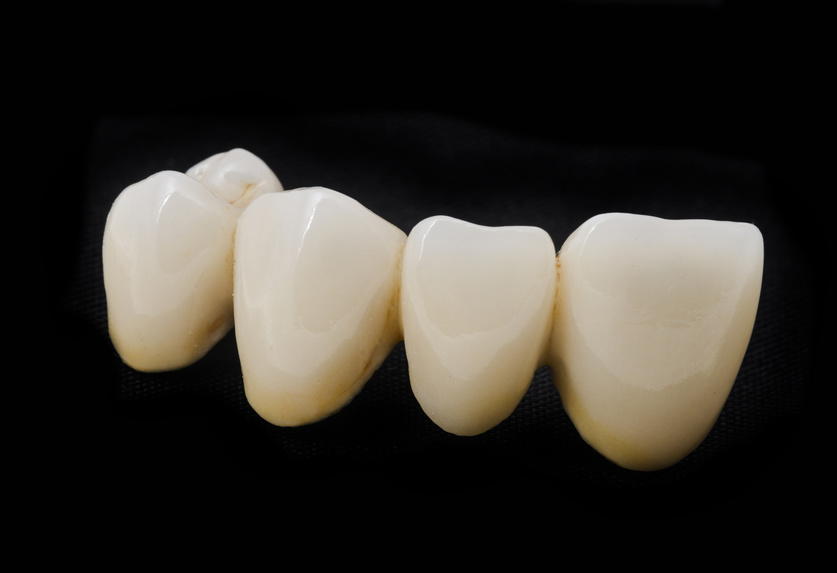Dental Crowns: Everything You Need to Know

Unfortunately, many people will face some kind of dental decay in their lifetimes that could compromise their oral health. While normal fillings from your family dentist can address cavities, some teeth experience extensive enough decay that they require dental crowns.
Dental crowns are essentially caps placed over damaged or decayed teeth to restore their shape, size, strength, and improve their appearance. A crown is like a prosthetic tooth that fits over your damaged tooth. Crowns are used to mimic the appearance and function of regular teeth when they can no longer work on their own. A tooth may require a crown if it has been worn down, has extensive cavities, or leaves a large gap between neighboring teeth. Here’s some general information about dental crowns and what you can expect if you need one.
1. Purpose: Dental crowns serve various purposes, including:
- Protecting weak teeth from further damage or decay.
- Restoring broken or severely worn-down teeth.
- Holding together parts of a cracked tooth.
- Covering and supporting a tooth with a large filling when not much tooth structure remains.
- Covering discolored or misshapen teeth for cosmetic purposes.
- Anchoring dental bridges in place.
- Covering dental implants.
2. Types of Crowns: Several materials are used for making dental crowns, each with its own advantages and considerations:
- Metal: These crowns are highly durable, but their metallic color makes them less suitable for visible teeth.
- Porcelain-fused-to-metal (PFM): Combines the strength of metal with the aesthetics of porcelain.
- All-ceramic or all-porcelain: Best for natural-looking results as they closely mimic the color and translucency of natural teeth.
- All-resin: More affordable but less durable and more prone to wear and fracture compared to other types.
- Zirconia: Known for its strength and durability, often preferred for molars.
3. Procedure: Getting a dental crown typically involves a few steps:
Getting a crown usually requires two separate dentist visits. In the first, you’ll be measured and fitted for the crown, and likely given a temporary one. Your crown will be custom-fitted to your mouth so that it looks, feels, and operates just like a real tooth. A few days or weeks after your first visit, your dentist will install the crown in your mouth while using local anesthesia or dental sedation.
- Consultation: The dentist examines the tooth and discusses treatment options.
- Preparation: The tooth is reshaped to accommodate the crown, usually under local anesthesia.
- Impression: An impression of the prepared tooth is made to create a custom crown.
- Temporary Crown: A temporary crown may be placed while the permanent one is being made.
- Fitting: Once the permanent crown is ready, it’s fitted and adjusted for comfort and bite.
- Bonding: The crown is cemented into place once both you and your dentist are satisfied with the fit.
4. Aftercare: Proper care can extend the lifespan of your dental crown:
- Maintain good oral hygiene with regular brushing and flossing.
- Avoid chewing hard foods or objects that could damage the crown.
- Schedule regular dental check-ups for monitoring and maintenance.
- Address any issues promptly, such as pain, sensitivity, or a loose crown.
5. Lifespan: The longevity of a dental crown depends on various factors, including the material used, oral hygiene practices, and habits like teeth grinding. With proper care, crowns can last anywhere from 5 to 15 years or more.
6. Cost: The cost of a dental crown varies depending on factors such as the material, location, and dentist’s expertise. Generally, crowns can range from a few hundred to over a thousand dollars per tooth.
7. Insurance Coverage: Many dental insurance plans cover a portion of the cost of dental crowns, especially if they’re considered necessary for oral health. It’s essential to check your policy for details on coverage and any limitations.
Overall, dental crowns offer an effective solution for restoring damaged teeth and enhancing your smile, but it’s crucial to consult with your dentist to determine the best option for your specific needs.
Not sure if you need a filling, a crown, or an implant? Just ask your RDA dentist, we’ll perform a thorough examination and give you the best advice. Be sure to schedule a regular check-up and cleaning every six months for preventative care. That way, your dentist will be able to detect any changes or cavity growths that might require attention. The earlier you can catch the signs of decay, the easier they are to deal with — which helps keep your smile looking bright and beautiful, no matter your age.

